eISSN: 2576-4470


Public Policy Special Issue Political Science and International
University of Bridgeport, USA
Correspondence: Manu Mitra, University of Bridgeport, USA
Received: April 22, 2018 | Published: December 31, 2018
Citation: Mitra M. Free universal health care system in United States. Sociol Int J. 2018;2(6):779-785. DOI: 10.15406/sij.2018.02.00137
The United States doesn’t have any universal health coverage or a uniform healthcare system. It spends about 18% of its annual gross domestic product (GDP) on health. As per records, US spending on healthcare have increased by 4.3% in the year 2016. This policy paper addresses the complexities surrounding the policy-making and implementation processes in the healthcare system of the US. Considering the factors that challenge the development of universal health coverage in the US; this paper proposes the development of a funding program for free basic universal health care system without jeopardizing existing system.
Keywords: universal health care, government, politics, bureaucracy, health coverage, US congress, universal health care policy, universal health coverage, health insurance, health care expenditure
Majority of health care in United States is sponsored by employers, unlike most of European counterparts. Normally, an employer selects and contracts with a third party to administer health benefits program financed either by the employer or self-funding (self-insurance). Traditionally, health care programs gave employees and their dependents to the freedom to choose and utilize the amenities of any health care service provider. The employees were later reimbursed for covered benefits, less some form of cost sharing such as an annual deductible or co-insurance.1
The American health system falls short of the standards reached by other Western and even some Eastern welfare states. For instance, US child mortality is about 7 per 1000children as compared to 2 per 1000 in Finland. Then there is life probability. A Japanese child born today can expect to reach the age of 84 approximately, whereas an American child can expect to reach age of around 79, even though the United States spends around 7% more on health care than Japan. America still manages to reach the life probability of around 78 years in Qatar. However, this accomplishment becomes less remarkable, when considering that the United States has attained first rank in health care expenditures and the highest health expenditures per capita among OECD countries. At the same time, it is important to note that the varying health care spending figures from country to country do not fully consider the size of economy; this means that the calculation of healthcare spending as a percentage of GDP will vary depending on the GDP of the country. A country like the US that has a large economy might spend a smaller percentage of the GDP on health as compared to a relatively smaller economy like Qatar, but in absolute terms, the US spends much more on healthcare than Qatar. Therefore, when analyzing data on healthcare spending as a percentage of GDP across countries, it is important to make sure that the economies of those countries are comparable as well.2 Many of the health issues that United States faces involve an obesity epidemic, which costs the nation between$147 billion and $210 billion approximately per year. This is accompanied by problem of chronic illness, like diabetes and heart illnesses.3 This was not always the case. The decline in the US healthcare standards started around the 1980s. Although the United States was able to recover in life expectancy and reduce mortality rate from total number of diseases and illness in the last thirty five years, it has done so at a slower rate than its other countries.
How can it be that the US spends so much in healthcare, yet remains unsuccessful to achieve a standard quality of wellbeing that matches that of peer countries? This can be expressed by a metaphor. Let’s imagine you have a gold fish. You want this gold fish to be in good health condition. Therefore, you tell gold fish to swim about ten times counterclockwise in its aquarium everyday so that it can stay healthy. You also advise the goldfish not to eat too much food so that it can avoid obesity. You also invest in the best veterinary care money can buy, so that you can treat and cure the gold fish when it falls sick. Then one day when you wake up, and you find that your goldfish is deceased. What exactly went wrong? When you were busy advising the goldfish on what to eat and what not to, how to keep fit and making sure that it gets the necessary treatments, you ignored a key aspect of its care: you completely neglected the quality of the water. And no matter how fit the goldfish was how perfect its diet was – it could not compensate for the fact that it lived in an unhealthy environment. The goldfish in this context is analogy to us. The water is the social, economic and environmental conditions in which we actually live. If we have to escape diseases and gain better yields on our investments in health, then we must work to create a healthier habitat to live in (Figure 1).3,4
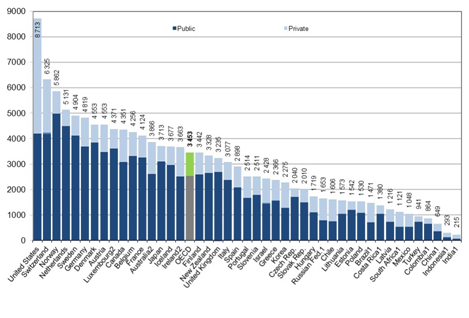
Figure 1 Health expenditure per capita (2013 or nearest).4
Why doesn’t the United States have universal health coverage?
It is worth to take note that various attempts were made for accepting comprehensive Health Care for American public about each applicant’s future plans in the health care policy, they were also significant for the option that people, they ignored. It certainly brought almost close to universal coverage, a system where government normally takes care for basic health care services for every citizen in the United States. The United States is one of the only progressive industrialized democracies in the world without any basic-countrywide health coverage. Below are the three major reasons why Universal Health Care system doesn’t exist.
People don’t want it
One of the major logical reason is the exclusive political practice in America. United States started on back of foreigner with an entrepreneurial spirit and without feudal system to set a rigid social structure. Americans can be thought to be individualistic.3 For instance, if we go hundred years back, the first homogeneous countries such as Germany and Britain, where workers successfully pressurized for pensions and unemployment insurance. On the other hand, workers in US were in the United States were asking for the same things at the same time but it was much harder to mobilize people because not everyone spoke the same language and there were plenty of young immigrants willing to work for whatever. Universal health care works best in other countries where people feel robust solidarity with one another and they think that everyone else in society is basically same as them. But that was never the case in the United States. The sheer size and cultural diversity of the country and particularly the old and painful divisions over ethnic issues mean that it’s all too easy to feel that their citizens are not like them at all.5
In United States, conservatives, have a sturdy belief in classical liberalism and the impression that government should play partial role in the society. For an example, the extent that health care is privately financed and has equal opportunity to earn money results in unequal income and unequal approach to health care. There are two justifications for classical liberalism. The first, individuals are partially morally responsible for poor health or short lives. Smokers, gluttons and sky divers are often taken as examples. Another account suggests that health care should be entirely a consequence of a free market.6 Public opinion supports this belief. There was survey study that was conducted by International Social Survey Program and it was found that a lesser percentage of Americans believe that health care is for people who are ill and that it is the responsibility of the government rather than individuals, unlike other leading countries like Canada, Germany, Sweden, etc.7
Interest Groups are not interested
Another reason that confined the debate about national health policy is the role of interest groups in prompting political systems. For instance; Universal Health Care was on the national political plan for approximately hundred years until a health care reform bill supported by President Obama in 2010. The most popular explanation for the failure was that special interests were continuously blocking the reform by lobbying lawmakers. Interest Groups and Health Care Reform across the United States evaluate the impact of interest groups to decide if collectively they are able to perform shaping the policy in their own interest or whether they influence policy only at the margins. The fact is that state government took against the action in health policy opposing interests, where federal government was not able to, that offers compelling puzzle that will that be a special interest to scholars of public policy, health policy and state politics. Insurance companies are the crucial players in this process, investing over a hundred million and keeping private insurers,. This means that a large part of the American healthcare system is privatized, as compared to other welfare states where healthcare is largely state-provided.8 Recent study also suggests that lobbyists are organizing to fight a possible “public option”. Should any challenge at broad national health insurance ever made, lobbyists would undoubtedly mobilize to stop its enactment process.7‒8
Enactment process is generally hard for Entitlement programs
The third major reason United States lacks broad health coverage is that applicants have completely avoided the topic altogether and America’s political organizations make it very difficult for very large entitlement programs to be enacted.
The United States political structure is more inclined to inactivity and any effort at broad reform must pass through the a complex course of congressional boards, budget evaluations, conference teams, adjustments and possible vetoes, while opponents of reform publicly blow up the bill. American culture is remarkably based on self-interest, which involves favoring private over government accountability; lobbyists are active, investing billions of dollars to make sure private insurers continue their eminence in the healthcare system; and organizations are planned in a way that prevents any major social policy alterations. As long as these factors remain in play, there is little or no reason to anticipate broad health care coverage in America anytime soon.4
Health care system complexities in the United States
Why health care?
Universal health care will create cost effectiveness that eliminates major health care bills and medical health-associated medical bill liquidations. It will simplify the approach to compensate for healthcare and in doing so, lower the total cost for healthcare provision in the United States.9
Complexity of health care
There is a non-profit organization which campaigns health care tries to get basic necessities for health care and also provide free clinics in some areas for citizens of United States (http://www.medicareforall.org). They have explained in much better way as of why universal health is very important not only for that particular state but for the whole nation. The figure 2 illustrates the complexity of health care spending, it explains a convoluted system of paying for health care as of today and it also clearly explains examples of bankruptcy, Medicaid lawyer, billing staffs, billing services these also add costs without helping pay health care providers (Figure 2).10
Effects of health care spending
The association between health care expenditure growth and the US economy is fundamentally complex and multidimensional. Since late 1990’s, health care expenditure has expanded at a faster pace of than Gross Domestic Product (GDP), inflation in prices and population growth (Figure 3).
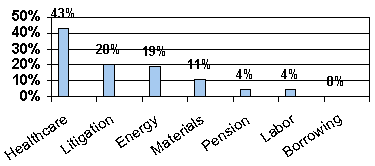
Figure 3 Greatest cost pressure on US Businesses.6
Total Spending
In the year 2003, overall national expenditure on health care was about $1.67 trillion or $5,670 per person. By 2013, national health spending is anticipated to reach $3.4 trillion or $10,709 per individual. As far as GDP, health expenses are projected to reach 18.4% by 2013, up from 2003 level of 15.3% (Figure 4) (Figure 5).
Effects of Health care spending overall economy
Experts in economics believe that quickly rising health care expenditure lowers GDP and overall work opportunities, while rising inflation. Impact of health care expenses on interest rates and the comparative effect on economic attainment across companies depend on the source of funding for federal health care expenditure. Investigations have found showed that shortage financing disproportionately not only damages export and capital goods companies but also damages consumer service businesses.12
Health care today
Regardless of theoretical concerns that health care associated issues may lead to poor health outcomes, little is currently known about outcomes of the current health care system.13 There is a deficiency of updated information on health care such as expenditure for individuals which makes harder to identify the exact issues.14The Health Care system in the United States is complex. Figure 6 illustrates the flow of money. It has many diversions on the way from households, which eventually pay for the entire nation’s health care to providers. Normally, the providers of health care get less than what households initially paid to finance health care. Both public and private organization provides society benefits in return, namely, access to health care when required.15 Efforts to measure quality and investigation reports and results to the public at large would help in more complete valuations of the United States Health Care standards and enable us to single out areas that need improvement (Figure 6).16
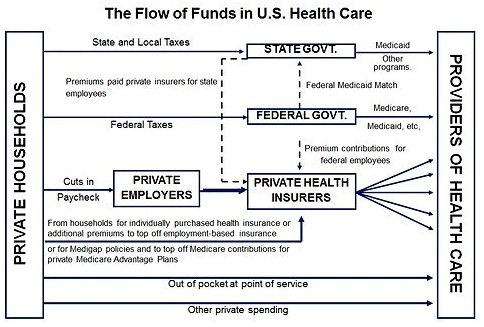
Figure 6 Flow of funds in United States.17
Figure 7 conveys variations over time in the flow of money through major private and public insurance plans and through out-of-pocket expenses by patients. It is worthy to note that a portion of Medicaid in this diagram includes the federal match, which is around two-thirds (2/3) of overall Medicaid expenditure. As a matter of fact, government insurance plans have played an important role in the overall flow of money in the health care. Their role in the future is now a severely debated issue in the political field (Figure 7).
Figure 8 illustrates personal health expenditure as percentage of overall national expenditure for three health insurers: they are private insurers, Medicare and Medicaid. These statistics are calculated from C.M.S. data (https://www.cms.gov). These percentages offer that Congress and state legislators allocate a high part of the fund to Medicaid and Medicare, which eventually becomes the income for the providers of health care. As per C.M.S., traditional Medicare program excluding money funded by Medicare to private Medicare advantage plans on behalf of recipients choosing policies as much as 98% cents is compensated to providers for every $1 appropriated by Congress for Medicare. It must be added that classical style Medicare sets fees and then just pays bills. It makes no active effort to govern cure (for example utilization controls, disease management, coordinating care, etc.), since it has not been permitted by the Congress to do so (Figure 8) (Figure 9).15
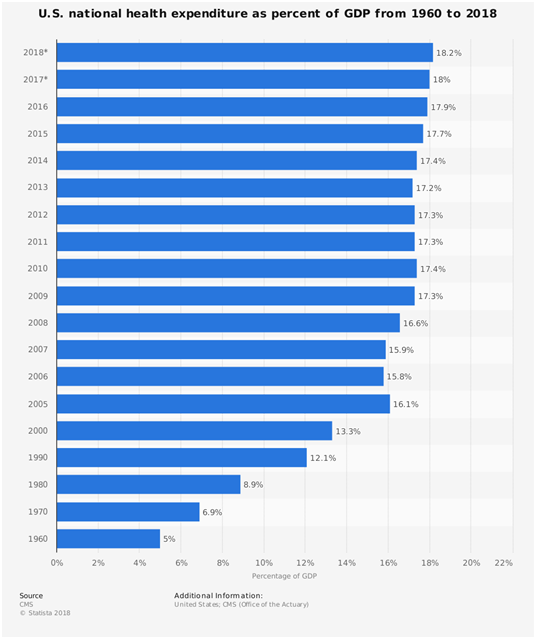
Figure 9 Spending on health care has been increased to 18.2% in 2018.18
Free health care in Canada
Canadian health care
There was survey from Strategic Counsel which found that 91% of Canadians prefer that their health care is better than US style system. In Canada there is universal health care system that means citizens of Canada don’t have to pay for most of the health care amenities. The universal health care scheme is paid through taxes and each province and territory has their individual health insurance scheme. All provinces and territories provide unrestricted emergency medical services, even if they don’t have a government health card considering the restrictions subject on immigration status. 19
Extra health insurance
Government health insurance plans gives access to simple medical services. Private insurance to pay may also be required because government plans doesn’t completely cover. Most simple types of plans are extended health plans. These costs are for prescription medications, dental care, physiotherapy, ambulance services, prescription and eyeglasses.20
How does Canadian health care system work exactly?
Canadian health care scheme was built around the value that all citizens obtain all “medically necessary and hospital physician services”. Each of Canada’s ten provinces and three territories invest and run a statewide health protection program. There is no cost distribution for the health care amenities guaranteed under the federal law. Canada is classically as a publicly financed structure, spending on these supplementary benefits that means about thirty percent of health expenditure comes from non-government sources. One of the statistics found that almost all Canadian expenditure was on dental care came from private organization dollars, sixty percent covered by company sponsored schemes and thirty five percent compensated out of pocket. Although Canada’s health care is publicly supported, many of service providers are government workers. Instead, doctors are usually compensated by the government at a settle fee for service rate. Organization for Economic Co-operation and Development (OECD) tends to give high marks on Canadian health care results in its regular look at international health care. Canada’s survival rates for breast and colorectal cancer are among the maximum as per OECD. Canada also does very well not only in primary care but also preventing exorbitant cost hospital admissions from chronic situations such as asthma and uncontrolled diabetes.21
Funding of universal health care as per author point of view
One of the major reasons United States doesn’t have universal health care because of the difficulty in the funding of the program. Figure 10 shows funding for Universal Health Care from Author point of view. Here Congress can make use of Federal Taxes, Corporate Taxes and donations on health care. If required they can also make use of Federal Crowd Funding (optional) to fund universal health care system. Similarly, let’s say even funding requirement was not met from federal government then state government can make use of state taxes and if required state government can use State Crowd Funding (optional) to compensate the deficit of Federal budget. After all these, Federal Government can give priority to individuals who are not working and if there may be still deficit in budget for individuals who are working; in that case employer can sponsor and make use of other sources and compensate the rest of deficit after Federal and state funds. This is one of the prospective for Free Universal Health Care for United States (Figure 10).
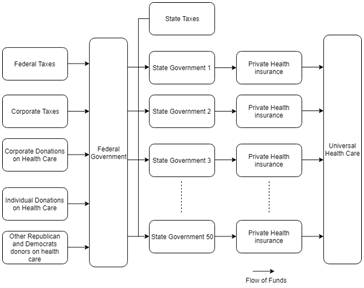
Figure 10 Authors point of view on spending on Universal Health Care without jeopardizing existing system.
Advantages of health care in United States
If Health Care would be implemented and compared to Canadian health care then below are the advantages (Figure 11) (Figure 12) (Figure 13) (Figure 14).
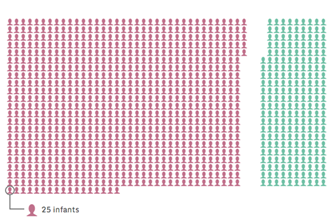
Figure 11 If US had the same rate as Canada then 5,400 fewer infant deaths would occur.22
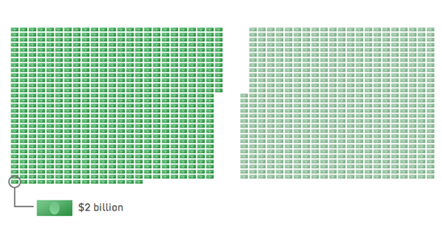
Figure 12 If US had same level of spending as Canada then $1.3 trillion fewer dollars would be spent.
If Congress had implemented universal health care then:
Various issues such as effects of health care, expenses, enactment of entitlement issues, complexity and comparison of health care with Canada are discussed. Author also points out that 91% of Canadian citizens prefer their health care system rather US style and that’s a big percentage. Only issue with the universal health care in United States is funding the program, implement and enact the law from Congress. Author has proposed funding of Universal Health Care without jeopardizing existing system and once law has enacted, everyone would be mutually benefited. With this funding, Congress can cover some basic necessities such as prescription medications, dental care, physiotherapy, eyeglasses prescriptions and ambulance services for citizens of United States. However, in this article it does not discusses about non-immigrants and other non-immigrant visitors. Author also agrees that some people may not want the program; in that case they can use simply use existing Medicare from the private/public insurance but premium would be high. Moreover using this new model, improved and better quality theoretical frameworks can be formulated in health care system.
None.
Authors declare that there is no conflict of interest.

©2018 Mitra. This is an open access article distributed under the terms of the, which permits unrestricted use, distribution, and build upon your work non-commercially.